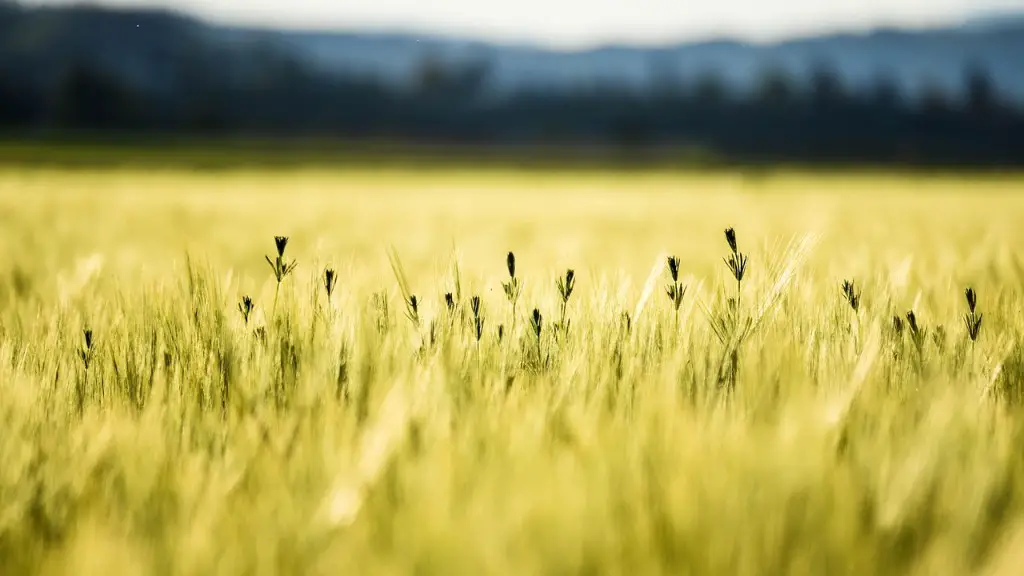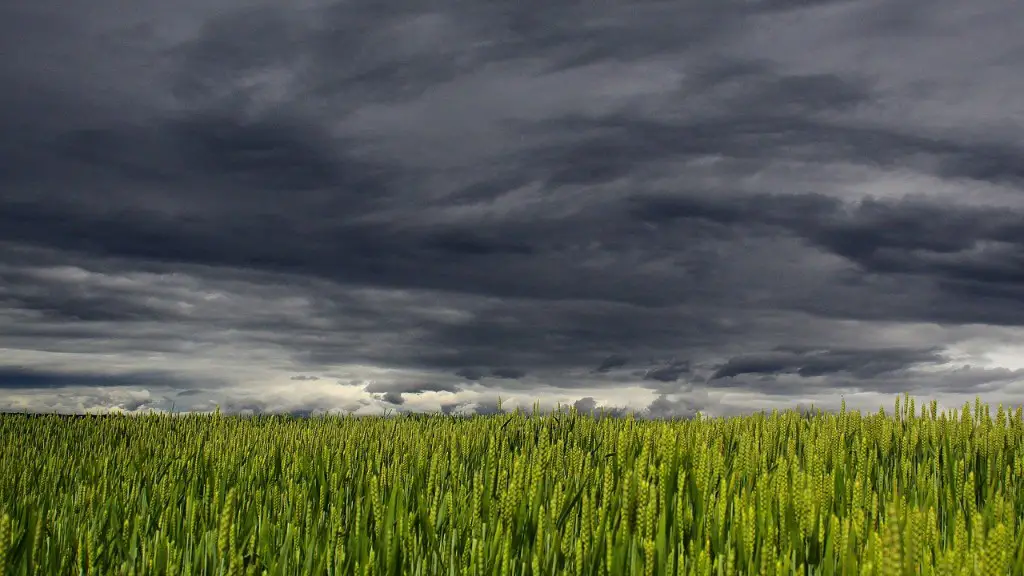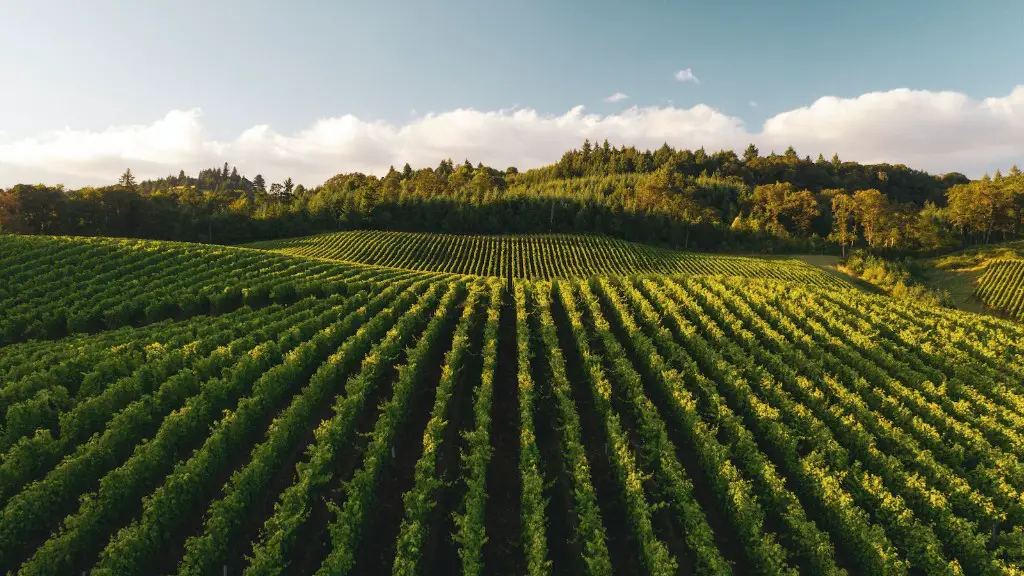Agriculture has always been a significant contributor to climate change. It is responsible for the greenhouse gases that result from the Burning of fossil fuels, the destruction of forests, and the raising and keeping of livestock.
The impact of agriculture on climate change is both significant and complex. Agricultural production is a significant source of greenhouse gas emissions, accounting for approximately 10-12 percent of global emissions. The sector also contributes to other drivers of climate change such as deforestation, land use change, and soil degradation.
At the same time, agriculture is also one of the sectors most vulnerable to the impacts of climate change, particularly in regions where it is the primary economic activity. Changes in temperature and precipitation patterns can lead to reduced crop productivity and livestock yields, increased irrigation needs, and increased occurrences of pests and diseases. Extreme weather events such as floods and droughts can also damage crops, disrupt supply chains, and lead to losses in revenue and livelihoods.
How does agriculture contribute to climate change?
Agricultural greenhouse gases (GHGs) are a significant source of atmospheric pollution. The three most important GHGs emitted by agriculture are carbon dioxide (CO2), methane (CH4), and nitrous oxide (N2O).
CO2 is released through tropical deforestation, which is often associated with agriculture. CH4 is produced by livestock and rice production, and N2O is emitted from fertilizing or burning croplands. Agriculture is responsible for about half of global methane emissions.
GHG emissions from agriculture contribute to climate change and have a negative impact on human health. Reducing these emissions is essential for protecting the environment and safeguarding public health.
Agriculture is a leading source of pollution in many countries. Pesticides, fertilizers and other toxic farm chemicals can poison fresh water, marine ecosystems, air and soil. They also can remain in the environment for generations.
What is biggest contributor to climate change
Fossil fuels are the main culprits behind climate change. They are responsible for emitting large amounts of greenhouse gases into the atmosphere, which trap heat and cause the Earth to warm up. The burning of fossil fuels also releases other pollutants, such as soot and smog, which can cause health problems. Therefore, it is important to find ways to reduce our reliance on fossil fuels and switch to cleaner sources of energy.
Agriculture has a profound impact on the environment. Five of the most significant environmental effects of agriculture are soil fertility loss, eutrophication of water bodies, deforestation, climate change and pesticide pollution.
Soil fertility loss is one of the most serious environmental effects of agriculture. It occurs when the nutrients in the soil are depleted faster than they can be replenished. This can lead to a decline in crop yields and eventually to soil degradation.
Eutrophication of water bodies is another significant environmental effect of agriculture. It occurs when excessive nutrients from agricultural runoff enter waterways, causing algae and aquatic plants to grow out of control. This can lead to a decrease in water quality and a decrease in the populations of fish, amphibians and other aquatic organisms.
Deforestation is another environmental effect of agriculture. It occurs when forests are cleared to make way for farmland. This can lead to a loss of habitat for wildlife, a decrease in the amount of carbon dioxide absorbed by trees and an increase in greenhouse gas emissions.
Climate change is another environmental effect of agriculture. Agriculture contributes to climate change by emitting greenhouse gases such as carbon dioxide and methane. Greenhouse gas emissions from agriculture are expected to increase as the world population continues to grow and demand
What are 3 negative effects of agriculture on the environment?
Large-scale, conventional farming focuses on intensive single crop production, mechanization, and depends on fossil fuels, pesticides, antibiotics, and synthetic fertilizers. While this system yields high production levels, it also contributes to climate change, pollutes air and water, and depletes soil fertility.
Organic farming is an alternative that relies on renewable resources, crop rotation, and other sustainable practices. Organic farming can help mitigate the negative impacts of conventional farming, and it can also provide other benefits such as improved soil health and increased biodiversity.
The expansion of agriculture has caused massive losses in biodiversity around the world. Natural habitats have been converted to farms and pastures, pesticides and fertilizers have polluted the environment, and soils have been degraded. These effects have had a devastating impact on the planet, and it is imperative that we take action to protect our remaining biodiversity.
What are the 3 main causes of climate change?
The increased concentrations of carbon dioxide, methane, and nitrous oxide in the atmosphere have caused the greenhouse effect to become more pronounced, resulting in an increase in the earth’s surface temperature. While there is still some uncertainty about the exact extent of the human contribution to this phenomenon, it is clear that human activity is playing a role in the increasing levels of these greenhouse gases in the atmosphere. Reducing our emissions of these gases is therefore critical to mitigating the effects of climate change.
These four sectors are responsible for the majority of global emissions, making them a critical focus for climate action. Reducing emissions in these sectors will require a mix of policy and technical solutions, as well as engagement from all parts of society.
What are the 3 main causes of global warming
There are a number of causes of global warming, but the most significant is carbon pollution. Burning fossil fuels releases carbon dioxide into the atmosphere, and this gas traps heat from the sun, causing the Earth’s temperature to rise. Climate change is another major cause of global warming. This refers to a long-term shift in the Earth’s climate, which can be caused by natural factors like changes in the sun’s output, or by human activity like burning fossil fuels. Finally, energy use is a major contributor to global warming. The more energy we use, the more carbon dioxide we produce, which leads to more climate change.
Farmers in India face many challenges in terms of accessing reliable and timely market information, forecasting supply and demand, and having efficient supply chains. In addition, cold storage facilities and food processing units are often inadequate, and there is a large intermediation between farmers and consumers. As a result, farmers often struggle to get fair prices for their products and to meet the demands of the market.
What is the most problem in agriculture?
Agricultural land is being lost at an alarming rate due to development and other land uses. This is a major problem because it reduces the amount of land available for food production. The loss of agricultural land also results in the loss of crop and livestock diversity. This is a problem because it reduces the genetic diversity of the food supply, which makes it more vulnerable to diseases and pests.
Negative impacts on the environment from agriculture are serious, and can include pollution and degradation of soil, water, and air. On the other hand, agriculture can also positively impact the environment. For instance, agriculture can trap greenhouse gases within crops and soils, or mitigate flood risks through the adoption of certain farming practices.
Why is agriculture bad for ecosystems
When a crop is harvested, it represents a significant amount of nutrients, water, and energy being taken from the land. This can leave the land barren and unfriendly for the growth and development of new organisms and ecosystems. This is especially true of land used for industrial monoculture farms.
The impact of slash and burn on the environment is well documented. The practice results in pollution of water bodies due to the toxic pesticides and insecticides used, as well as erosion and loss of forest soil. Additionally, the ecological effects of slash and burn are significant, including carbon sequestration, energy cycle regulation, and surface water quantity regulation.
What are the 10 problems of agriculture?
Canada is a country that is highly developed and modernized, with great infrastructure and social amenities. It is also a very welcoming place for immigrants and has a strong economy.
The environment Matters to agriculture because it provides the basis for food and agricultural systems. Agriculture can have positive or negative impacts on the environment.
Conclusion
The main ways that agriculture influences climate change are through greenhouse gas emissions, land-use change, and soil erosion.
Agriculture is a significant contributor to greenhouse gas emissions and climate change. Agriculture accounts for about 10% of global greenhouse gas emissions, and the sector is expected to grow as demand for food increases. Agricultural practices can contribute to climate change through emissions of methane and nitrous oxide, as well as through deforestation and changes in land use. Agricultural production is also a major source of water use and pollution, which can further contribute to climate change. As the world population continues to grow and the demand for food increases, it is critical that we take steps to reduce the impact of agriculture on climate change.





